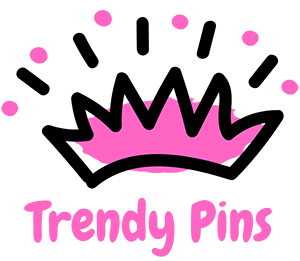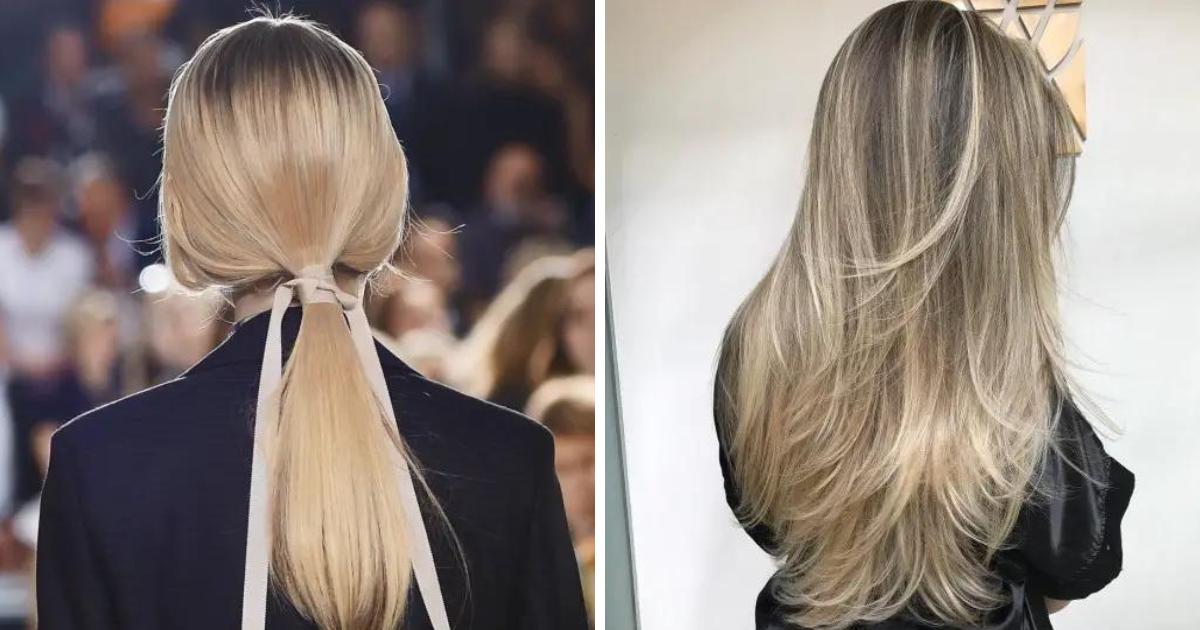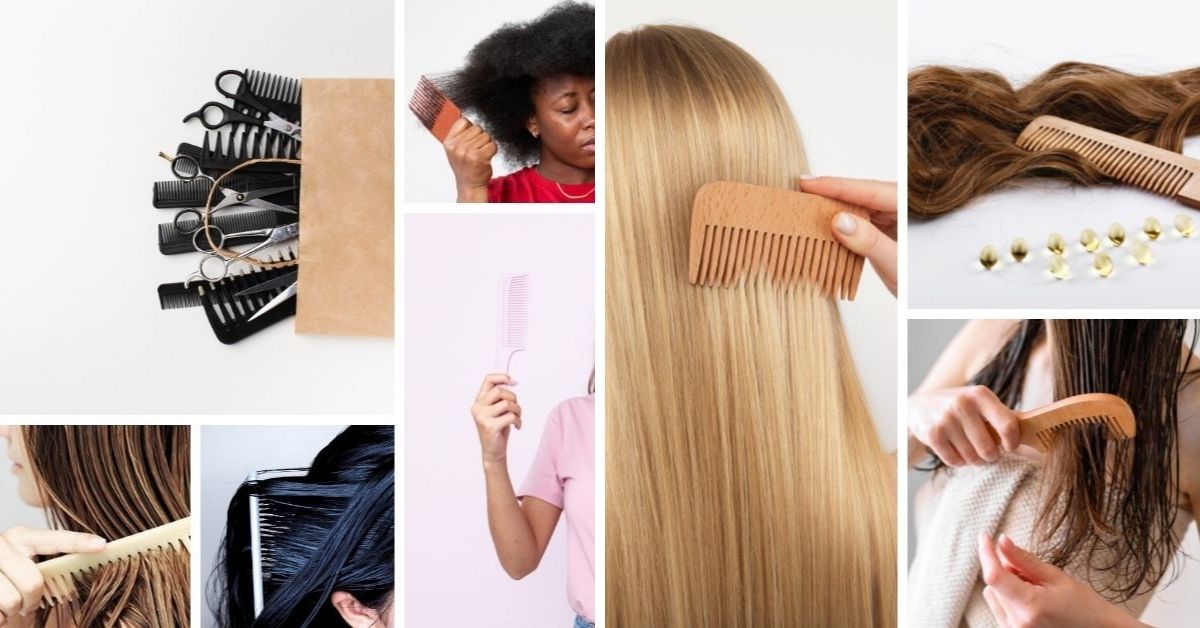If you’ve ever gone into a store and taken a look at the hair care section, you’ve probably seen all the types of combs available. How do you pick the right one?
The simple comb is one of the earliest tools known to man. They were prized by royals and rulers. They were once made from ornate materials and often given as gifts.
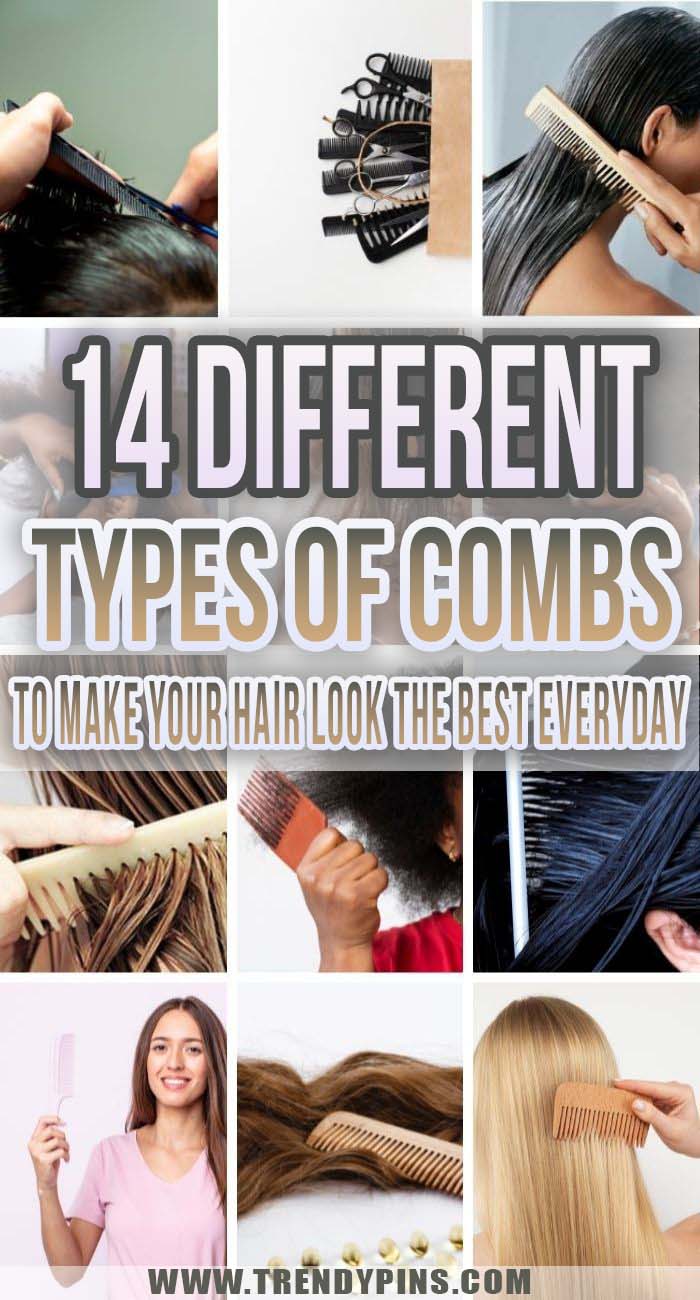
Mass production of combs began late in the 19th century and we’ve never looked back. As we learn more about hair textures and styling, innovations in combs are still being developed.
Take a look at this list and you’ll discover how far we’ve come from the days of running tortoise shells and deer antlers through our hair.
You’ll also find combs that work well with your type of hair. Even if you don’t have hair, you may still have a beard or mustache. Many people swear by a comb for styling facial hair. You may want a double-sided comb for your beard. They’ll have fine and coarse teeth for more control.
1. All-Purpose Comb

All-purpose combs should be in every person’s home hair care set up. The most popular length of comb is 7 inches. That’s too long to carry around with us and that’s why we leave them at home. Sooner or later, you’ll find yourself hunting it down.
They usually have two different widths of teeth, have a slight taper, and are very stiff. They’re inexpensive and available in plenty of colors, so everyone in your household can be assigned a unique color.
They’ll work for casual styling and quick touch-ups.
via Amazon
2. Barber Comb
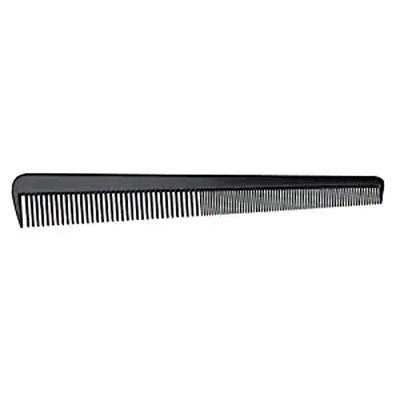
Barber combs are familiar to anyone who cuts hair. It’s designed specifically for handling the comb, hair, and shears all at once.
At first glance, it looks similar to an all purpose comb, but a barber comb is designed with a deeper taper from the coarse teeth to the fine teeth.
The wider teeth comb cutting products through wet hair. The finer teeth allow for precision clipping.
While many combs are designed with contours, barber combs always have a straight edge for accurate measurements.
They can be made of metal or plastic. Choosing one or the other is a matter of personal preference.
via Amazon
3. Detangler Comb

Detangler combs are designed to work with wet hair. They’re like wide tooth combs, but the teeth are set in a wider base with the teeth positioned on each side.
This gently loosens and separates strands of tangled hair.
via Amazon
4. Fine-Tooth Comb
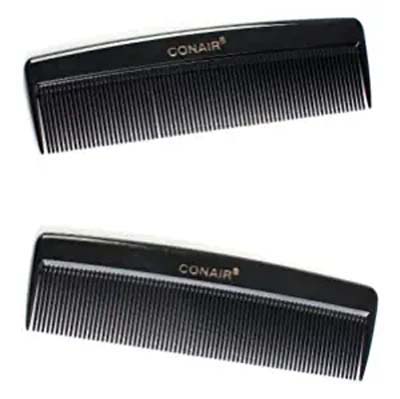
A fine-tooth comb is often the only comb you’ll ever need. It’s small, durable, and perfect for short, thin hair.
If your hair is on the thick side, this may not be the right comb for you. You’ll know if the teeth are too close for you as hair might break, the comb could get stuck, or the teeth might break off.
Many people keep a fine-tooth comb on hand for styling thinner strands along the hairline.
via Amazon
5. Folding Comb
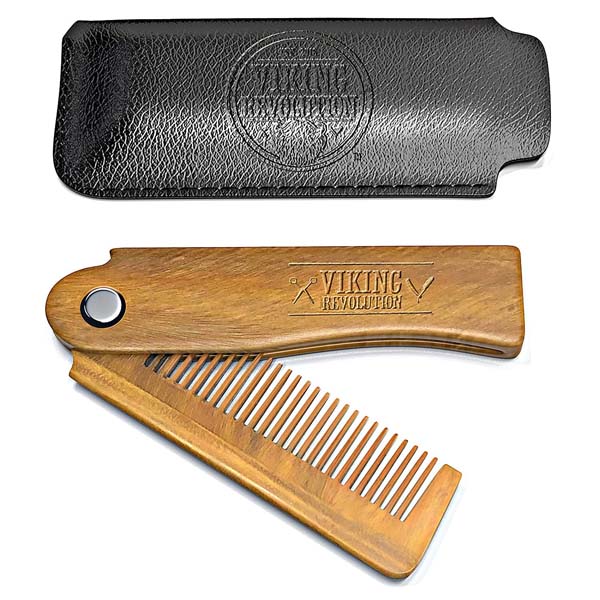
A folding comb can have fine or coarse teeth. One end has a hinge which is connected to a sheath. The comb folds out, so the sheath becomes the handle. It’s great for protecting the comb teeth from breaking or catching on pockets.
You can find smaller versions that are handy to have when you’re styling your mustache.
via Amazon
6. Pick Comb
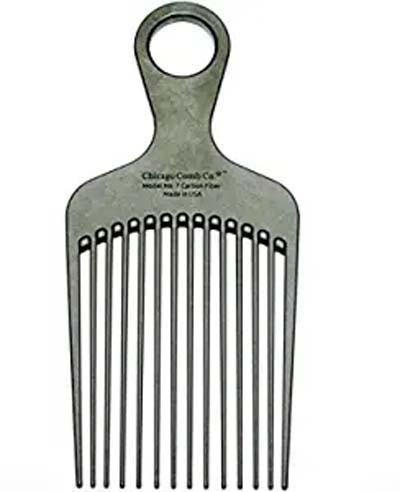
You’ll find pick combs that are made from metal or plastic. They have long, wide teeth and a short handle, which makes them small enough to fit in a purse or pocket.
They’re designed to get deep into frizzy hair and bring up some volume. They also work well with beards.
via Amazon
7. Pin Tail Comb
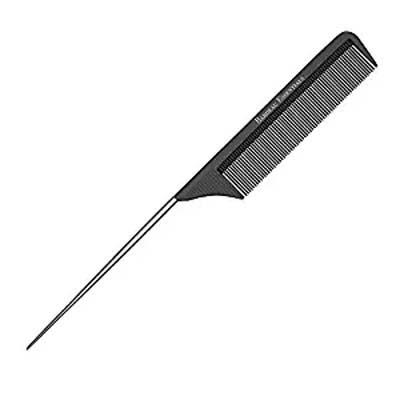
A pin tail comb is the comb you want if you need precision when separating hair for styling.
The end of the handle is thinner than a rat tail comb. For this reason, use a pin tail comb for coloring or curling. A rat tail comb is fine for pigtails and ponytails.
via Amazon
8. Pocket Comb
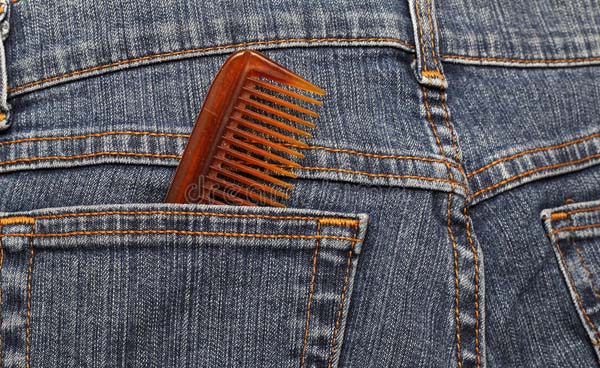
Basic pocket combs are timeless. They’re made from durable plastic to withstand the rigors of resting in a pocket.
They’re small but will usually have teeth of two different widths. Anyone with short hair will find room to carry a pocket comb.
via Dreams Time
9. Rake Comb
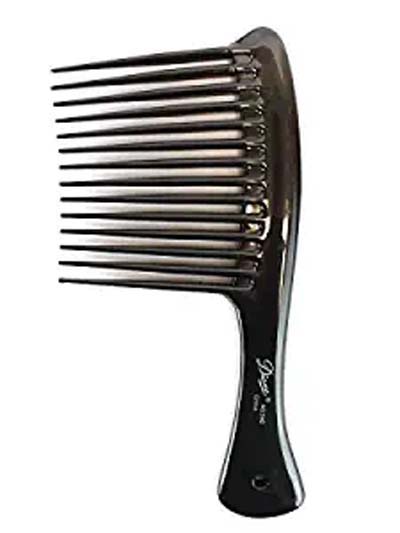
Rake combs are named for their similarity to garden variety rakes. The teeth are wide, although not as wide as a wide-tooth comb.
They’re used to comb through coarse, textured or tangled hair. They can also be used to detangle beards. Because of the design, you’ll experience less breakage and pain.
via Amazon
10. Rat Tail Comb
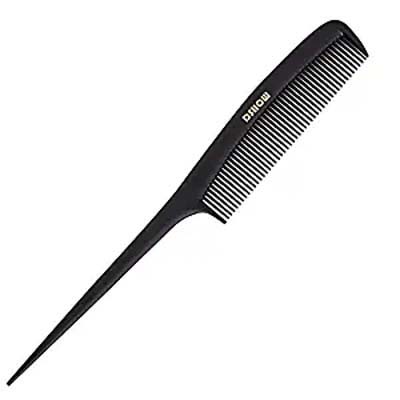
Rat tail combs can be used by anyone. It’s a fine-tooth comb with a long, thin handle that tapers at the end.
The tip of the handle is used to create parts for styling separate sections of the hair. Because of its point, it’s easy to create a separation exactly where you want it.
They’re sturdy, inexpensive, and can be found in most stores, both on and offline.
via Amazon
11. Teasing Comb
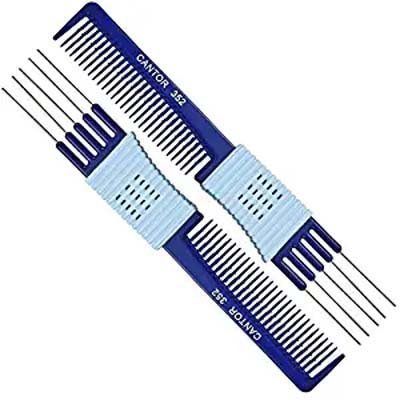
Teasing combs have thin teeth on one end and long teeth on the other end. The longer prongs are usually made of metal. This works best with longer, thin hair.
To tease your hair, comb out a section and hold it straight out from your head. starting near your scalp, run the comb towards your head five to ten times. Continue to work outward and in sections until you’ve achieved the volume you want.
via Amazon
12. Twist Hair Comb
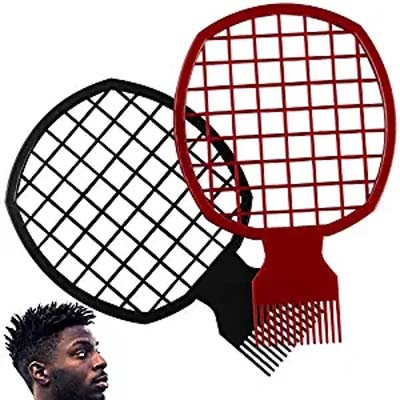
The twist comb is a more recent invention based on the weave of a tennis racquet. It’s designed for afrocentric hair. It doesn’t hurt, pull, or break hair like conventional combs do. It’s made with a woven stainless steel center and a polycarbonate frame.
via Amazon
13. Wallet Comb
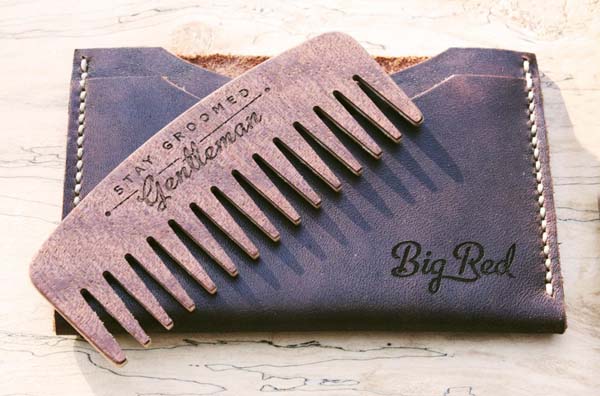
A wallet comb is about the size of a credit card and made from stainless steel. It can be single-sided or double-sided.
Single-sided combs are easier to grip and have less bulk. You can find them for beards and hair. Wood is the best material for beards.
14. Wide-Tooth Comb
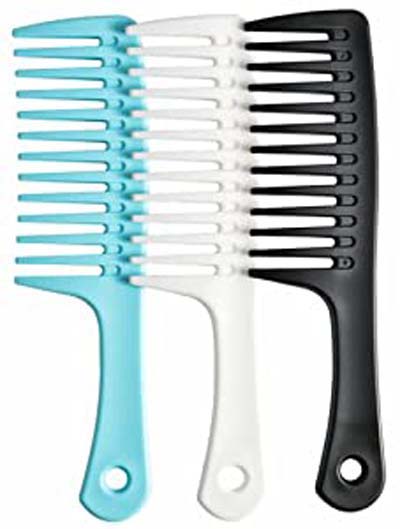
Wide-tooth combs are the right choice for wet hair and when treating it with hair color and chemicals used for straightening. They have widely spaced thick teeth.
via Amazon
